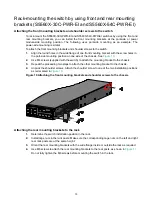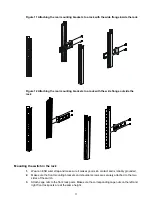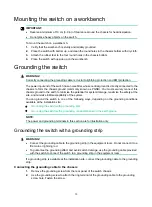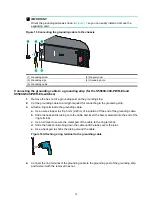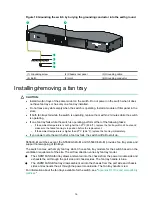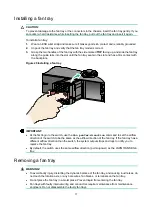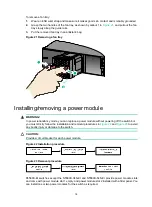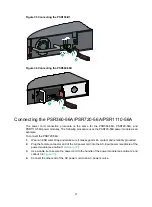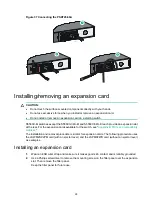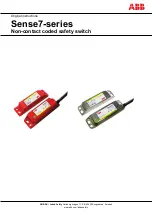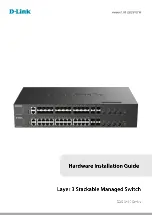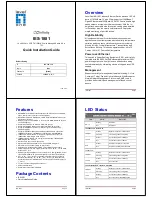
13
Mounting the switch on a workbench
IMPORTANT:
•
Reserve a minimum of 10 cm (3.9 in) of clearance around the chassis for heat dissipation.
•
Do not place heavy objects on the switch.
To mount the switch on a workbench:
1.
Verify that the workbench is sturdy and reliably grounded.
2.
Place the switch with bottom up, and clean the round holes in the chassis bottom with dry cloth.
3.
Attach the rubber feet to the four round holes in the chassis bottom.
4.
Place the switch with upside up on the workbench.
Grounding the switch
WARNING!
Correctly connecting the grounding cable is crucial to lightning protection and EMI protection.
The power input end of the switch has a noise filter, whose central ground is directly connected to the
chassis to form the chassis ground (commonly known as PGND). You must securely connect this
chassis ground to the earth to minimize the potential for system damage, maximize the safety at the
site, and minimize EMI susceptibility of the system.
You can ground the switch in one of the following ways, depending on the grounding conditions
available at the installation site:
•
Grounding the switch with a grounding strip
•
Grounding the switch with a grounding conductor buried in the earth ground
NOTE:
The power and grounding terminals in this section are for illustration only.
Grounding the switch with a grounding strip
WARNING!
•
Connect the grounding cable to the grounding strip in the equipment room. Do not connect it to a
fire main or lightning rod.
•
To guarantee the grounding effect and avoid switch damage, use the grounding cable provided
with the switch to connect the switch to a grounding strip in the equipment room.
If a grounding strip is available at the installation site, connect the grounding cable to the grounding
strip.
Connecting the grounding cable to the chassis
1.
Remove the grounding screw from the rear panel of the switch chassis.
2.
Use the grounding screw to attach the ring terminal of the grounding cable to the grounding
screw hole. Fasten the screw.












